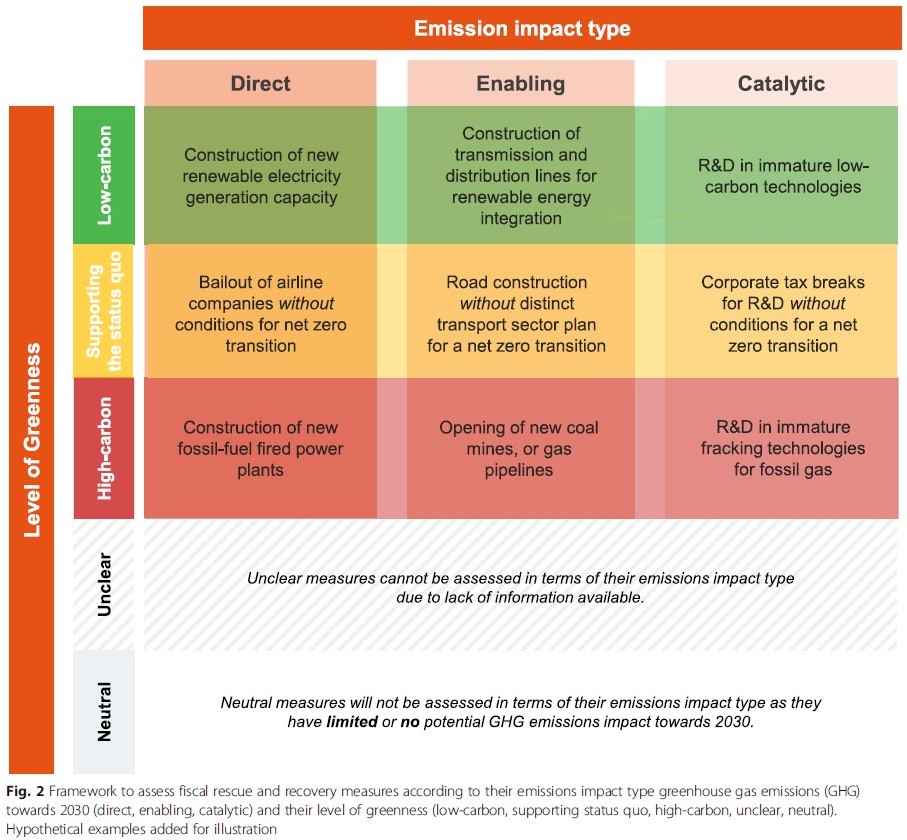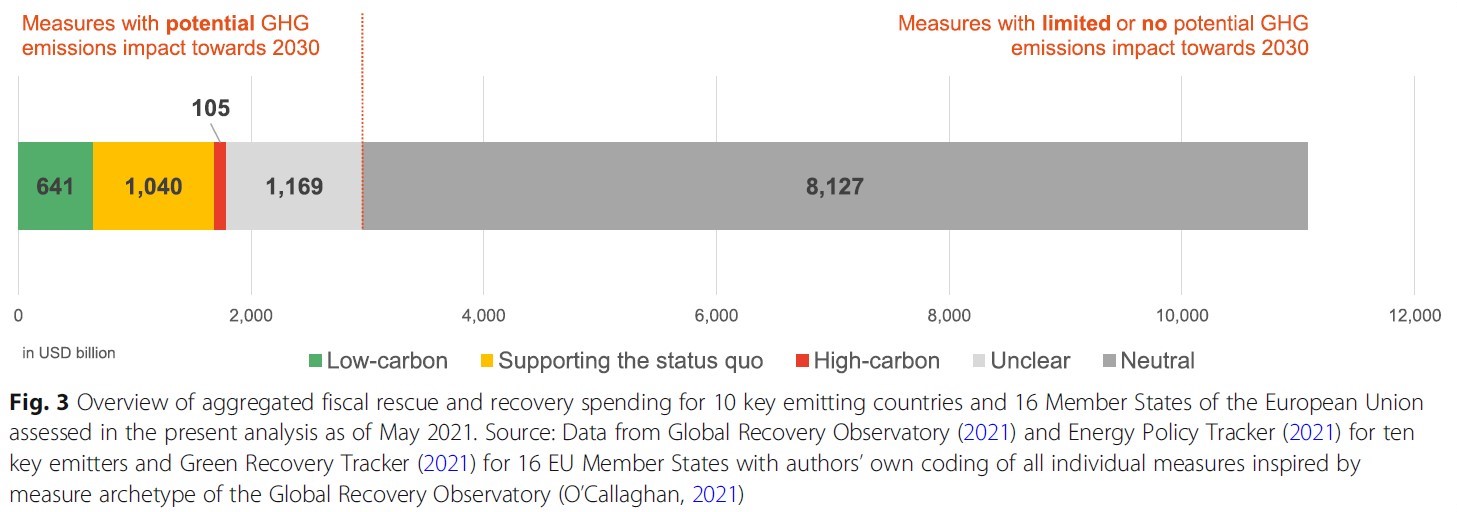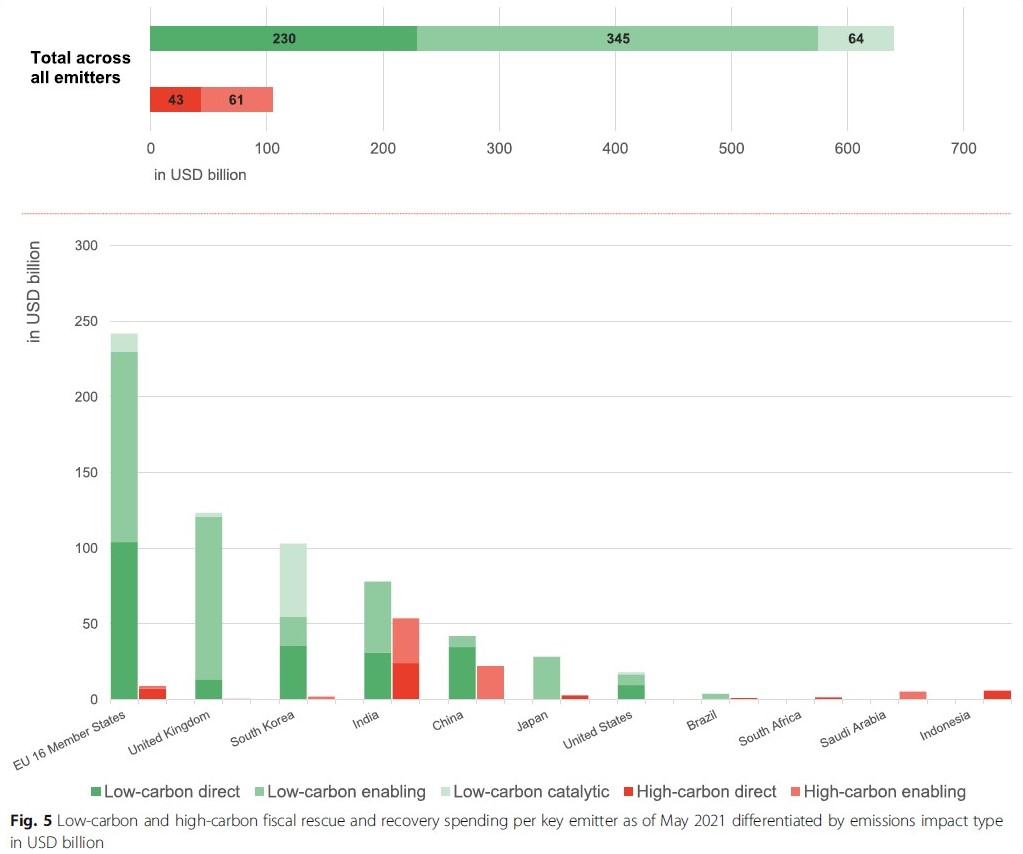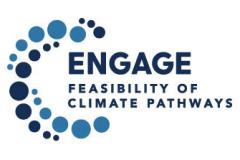In this Climate Action publication, we find that only parts of the fiscal stimulus spending in response to the COVID-19 pandemic by 26 key emitters has been allocated to low-carbon measures (22%). Instead, large shares focus on measures supporting the status quo in their economies (35%) and even explicitly high-carbon measures (4%). Government’s collective rescue and recovery actions remain inadequate considering both the scientific evidence on the urgency to fight climate change and their own commitments. Policy makers ought to change course on their continuing recovery spending efforts, and better prepare for upcoming fiscal budgeting cycles and future socio-economic crises.
Main findings:
This paper analyses how fiscal stimulus spending in response to the COVID-19 pandemic supports the low-carbon transition. We developed a new framework to categorise rescue and recovery spending measures according to their level of greenness and their type of expected impact on greenhouse gas emissions. This framework allows to better capture how measures’ emission impacts may unfold over time and to identify the share of fiscal spending missing robust conditions or incentives to be considered low carbon.
We assess nearly 2,500 measures announced by 26 emitters as of May 2021, representing around 67% of global GHG emissions excluding land use in 2019. These emitters comprise 16 Member States of the European Union and ten other key economies. Our findings show that the largest share (35%) of spending with potential GHG emission implications went to measures that cannot be explicitly coded as high-carbon or low-carbon but substantiate current business-as-usual practice (‘supporting the status quo’). Our assessment reveals the different magnitudes to which the emitters have missed the opportunity for a green recovery. Low-carbon spending is sizeable (22%) across countries. While governments’ spending decisions in the context of the COVID-19 economic recovery consider many important national and socio-economic circumstances facing a global health and economic crisis, their collective actions remain inadequate considering both the scientific evidence on the urgency to fight climate change and governments’ own long-term climate commitments.
We also find that almost two-thirds of the low-carbon spending across all emitters will likely unfold its impact over time. This fiscal spending may trigger emissions reductions through enabling or catalytic causal effects over time but will not necessarily lead to direct emission reduction impacts before 2030.
Governments might still have some leeway to adjust some parts of the fiscal spending not considered as low-carbon (high-carbon, unclear, supporting the status quo), for example by repurposing committed funding to low-carbon activities. However, they would need to do so in a timely manner. We draw three recommendations for policy makers from our analysis.
- First, governments worldwide should enhance their preparedness and capabilities to design and swiftly implement low-carbon rescue and recovery measures in a timely manner.
- Second, government should develop well-developed project pipelines in line with both national mid- and long-term targets and the Paris Agreement objectives to enhance their flexibility to identify appropriate low-carbon measures across different sectors in a timely manner once economic and social crises arise.
- Third, the identification of key lessons learnt in the policy response to the COVID-19 pandemic remains important to inform streamlining of low-carbon budgeting into upcoming annual fiscal budgeting cycles and investment projects.









